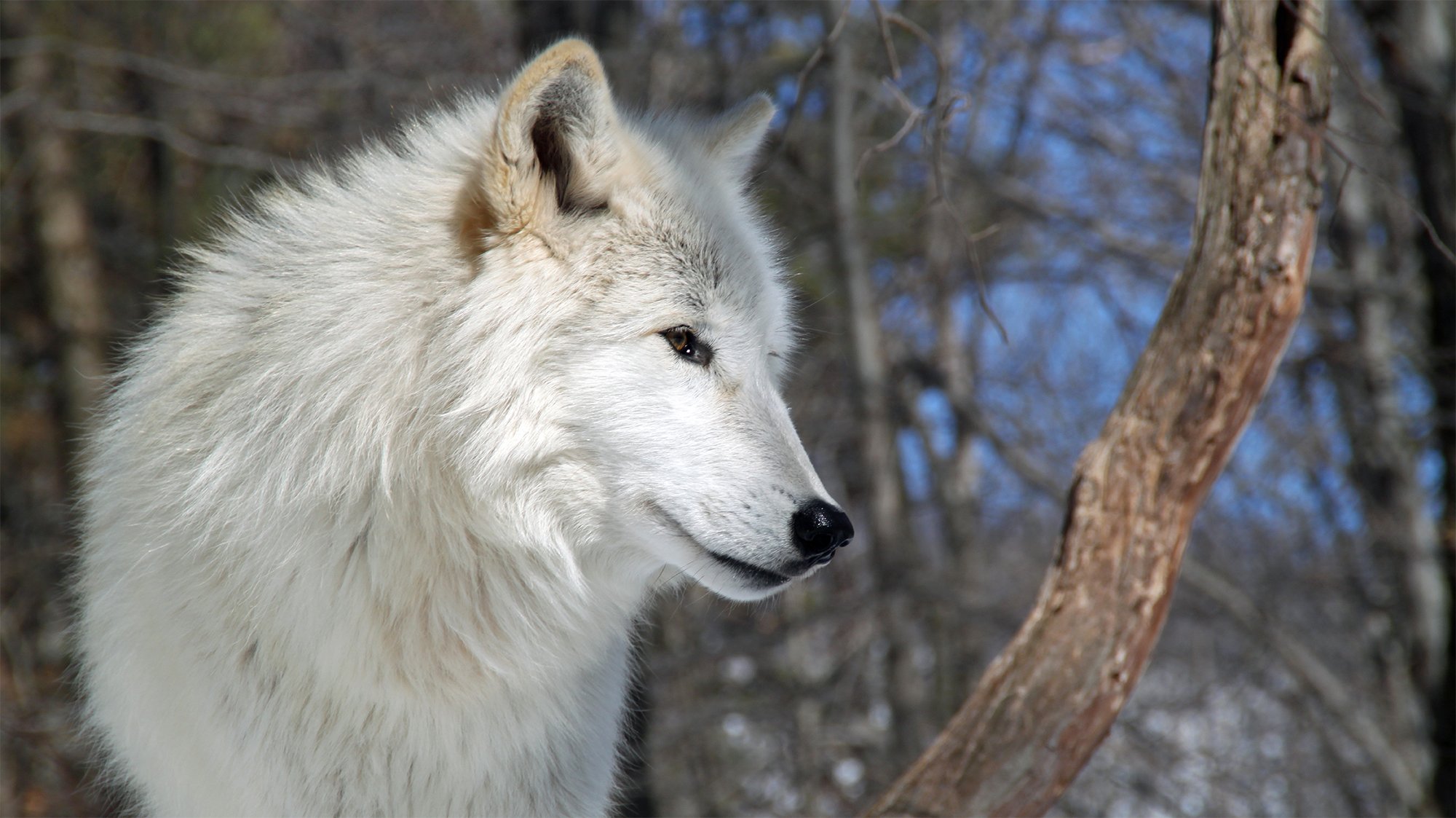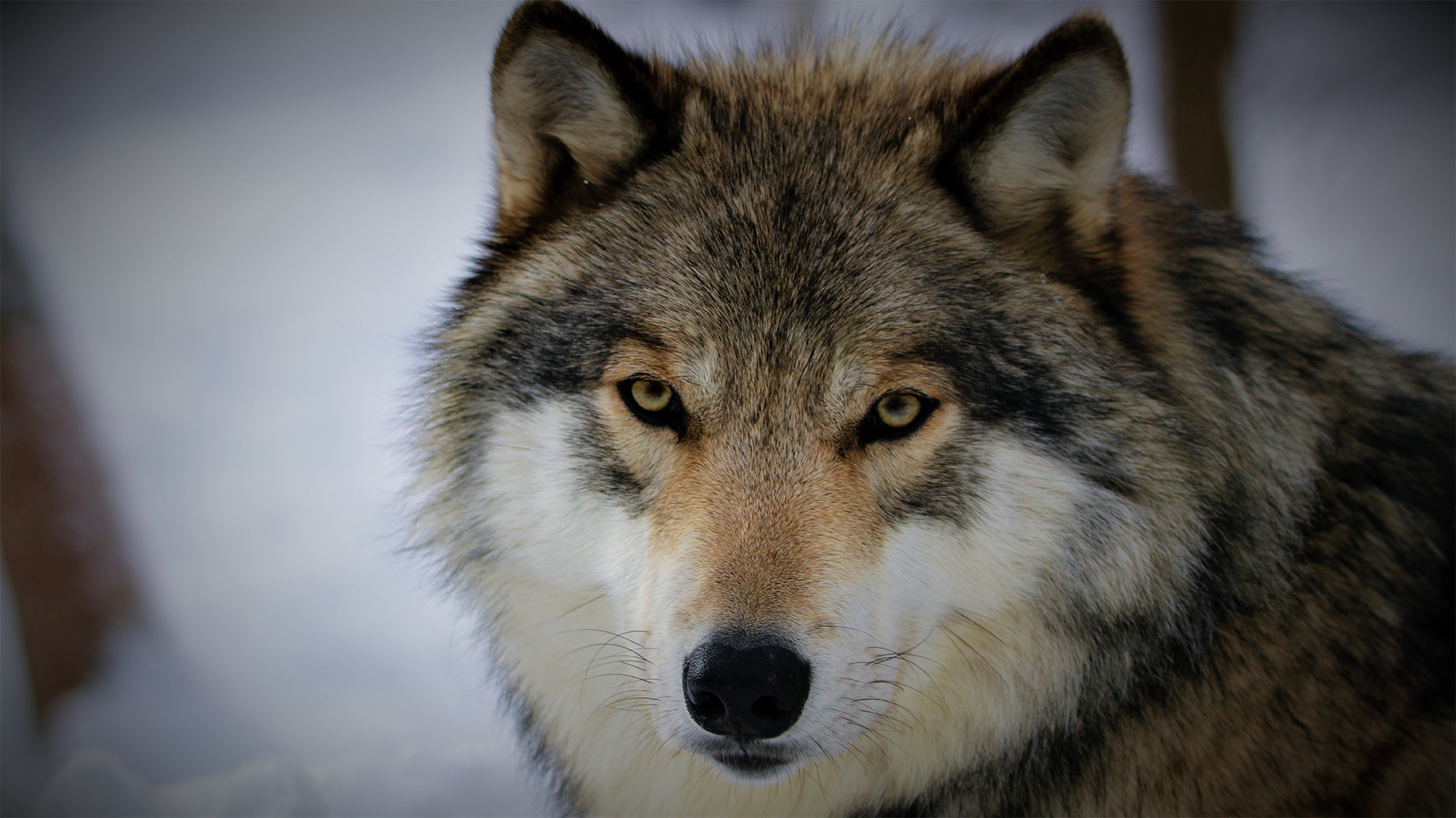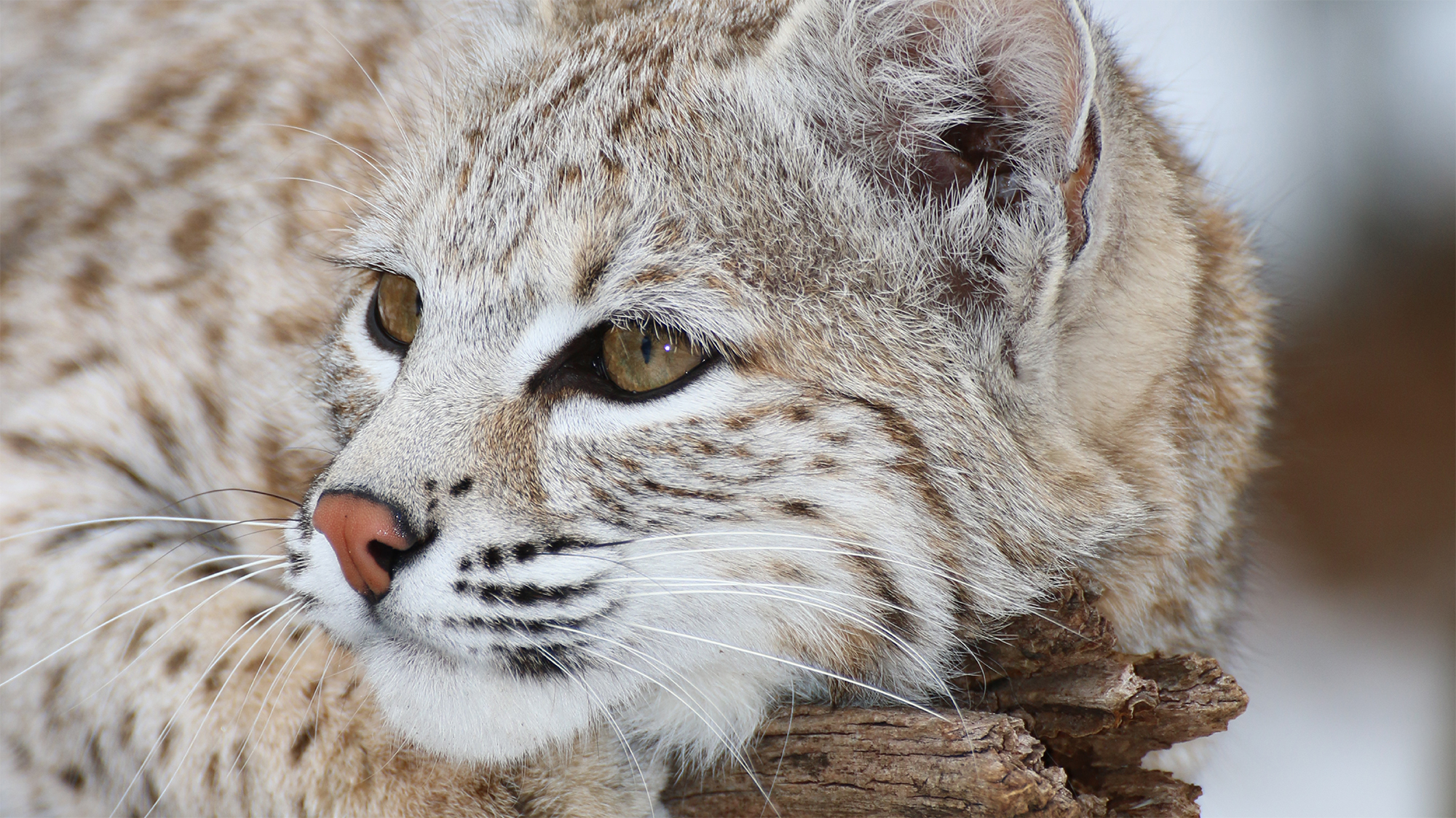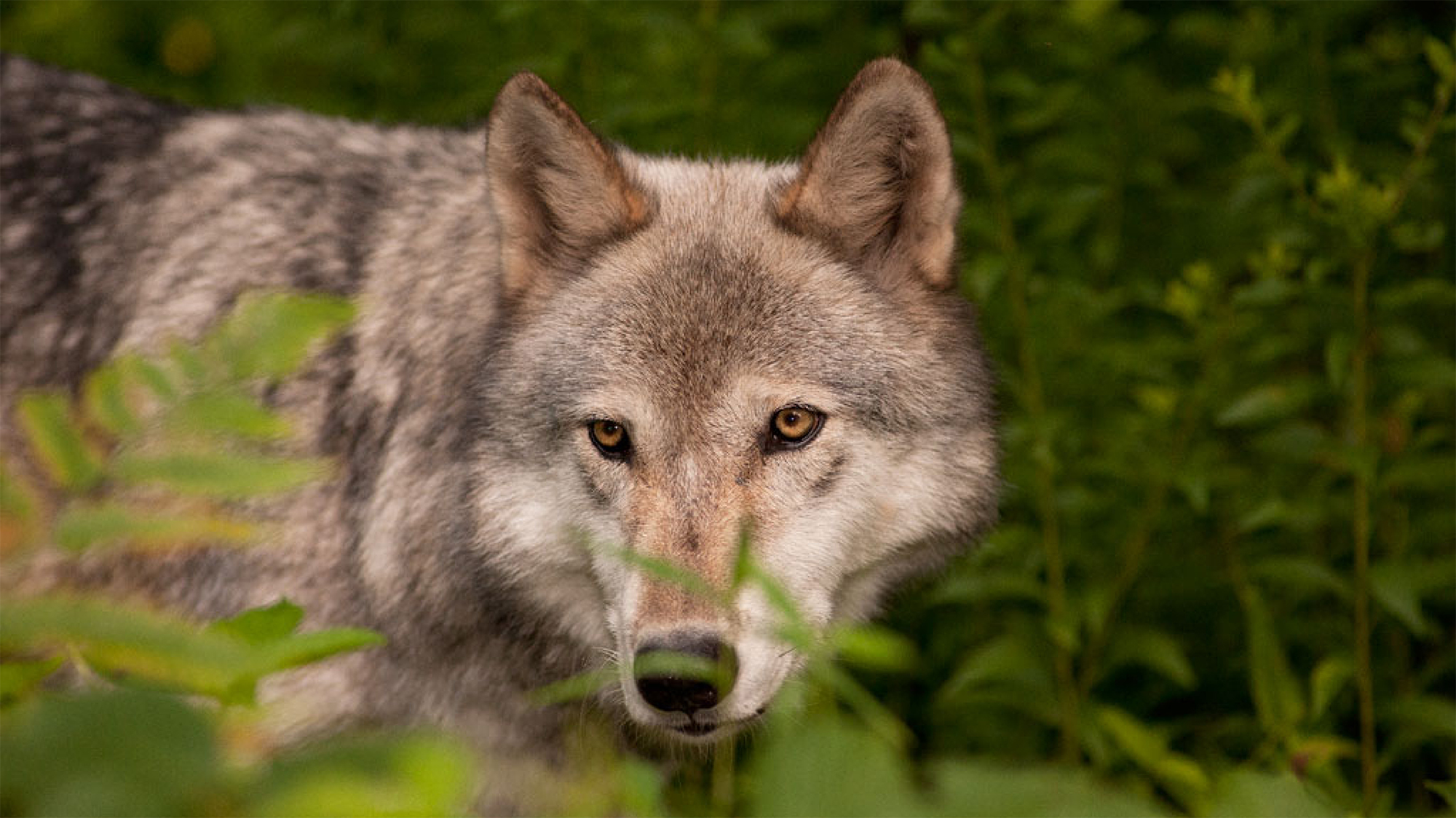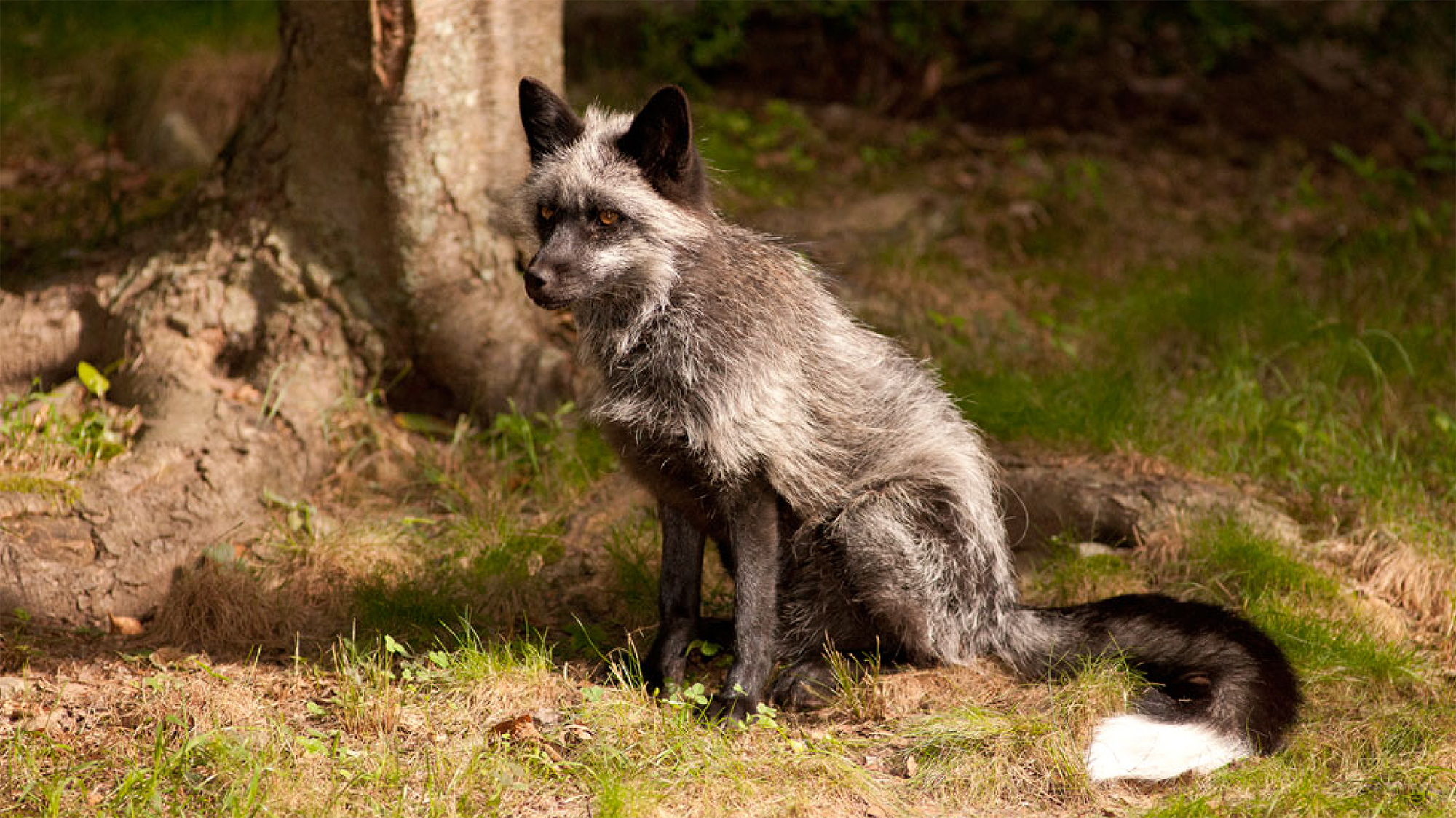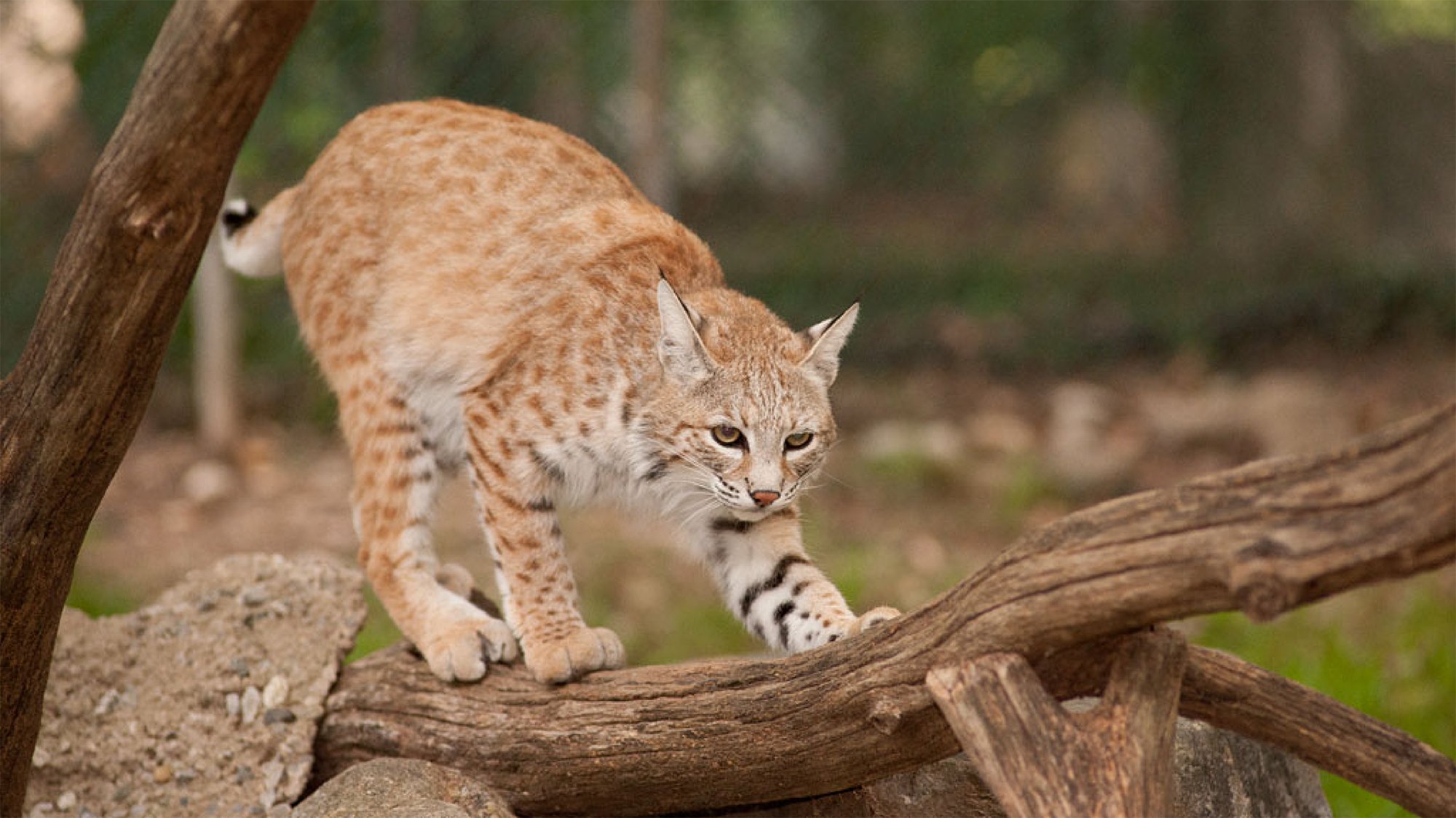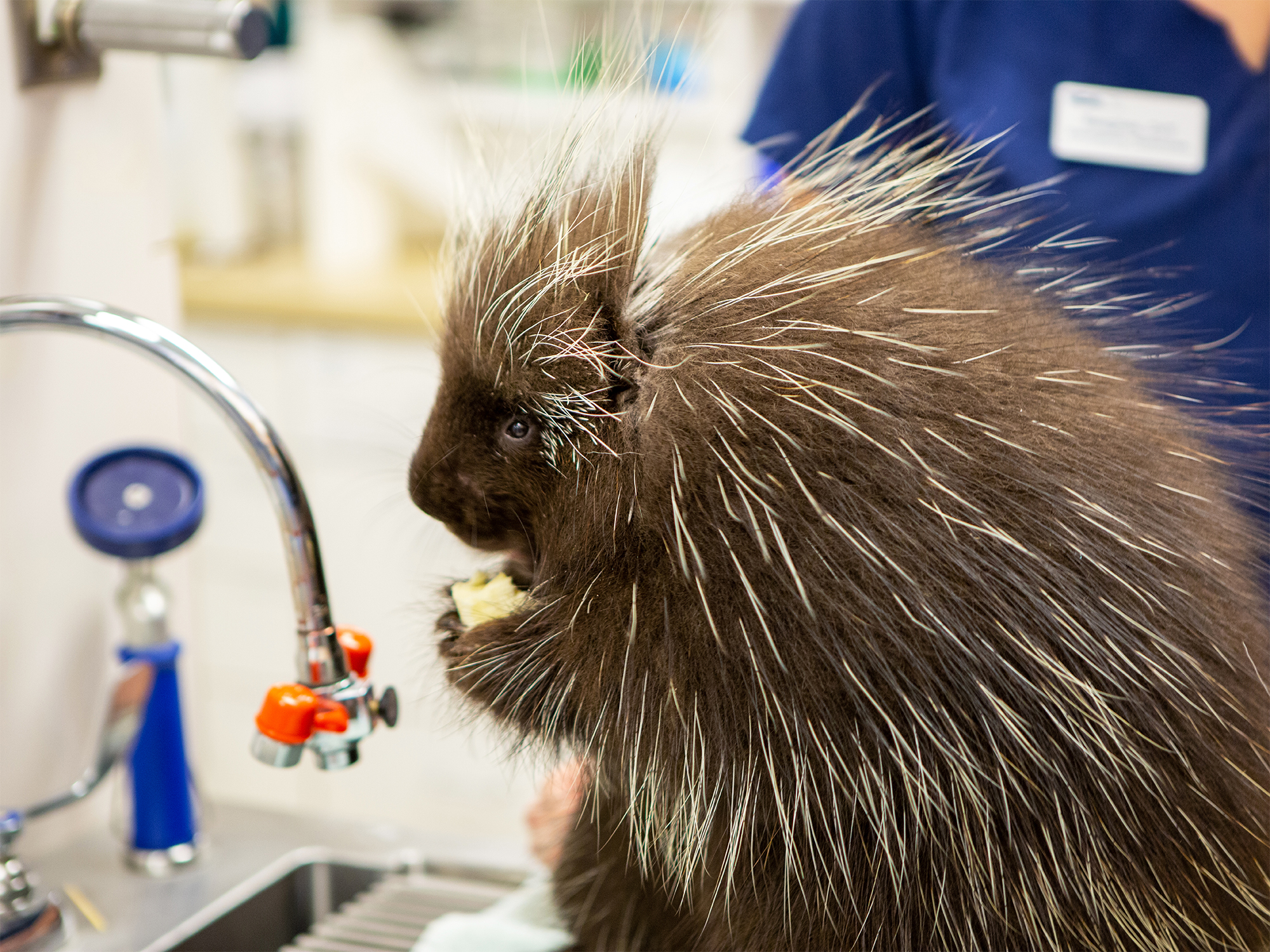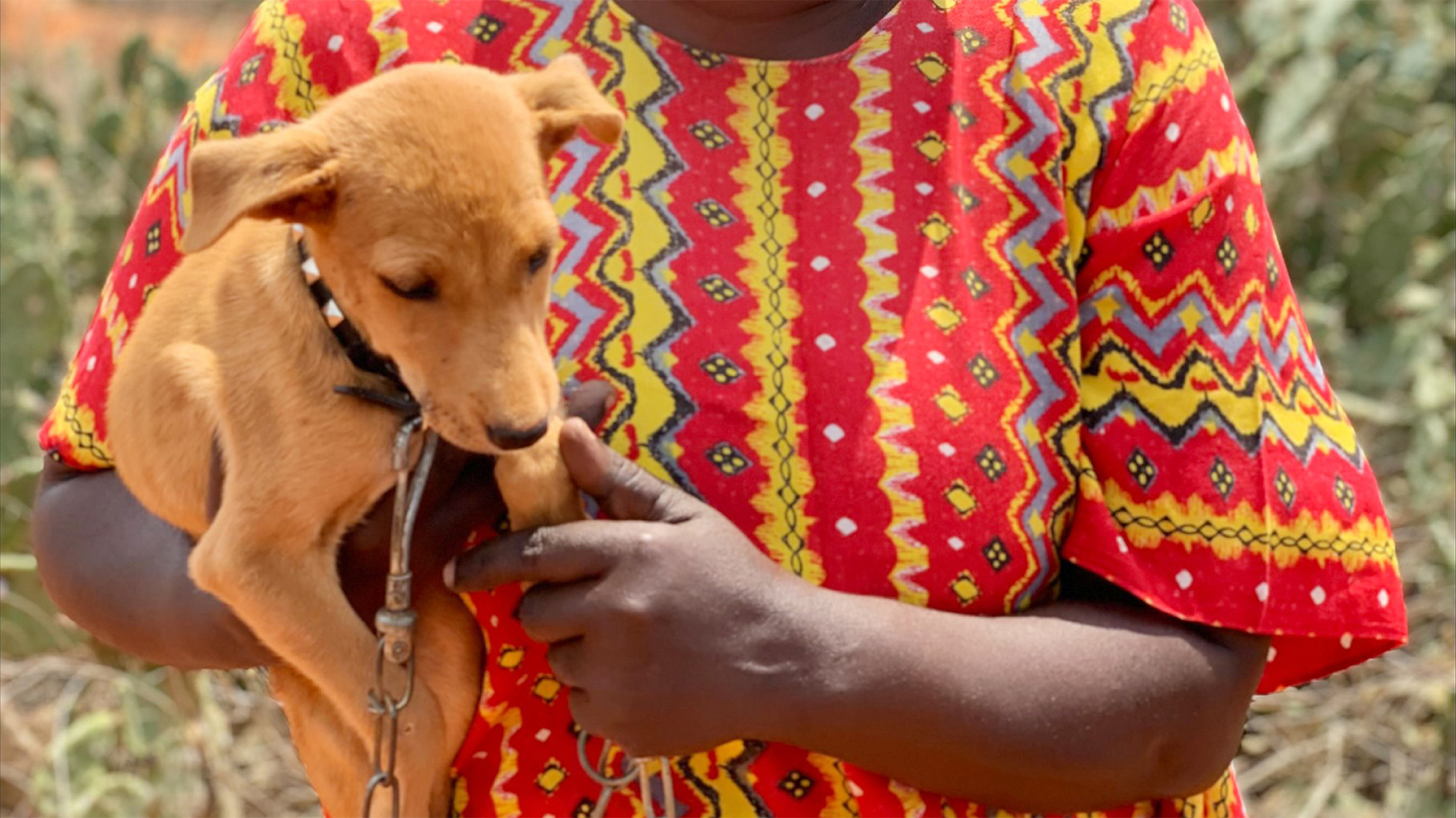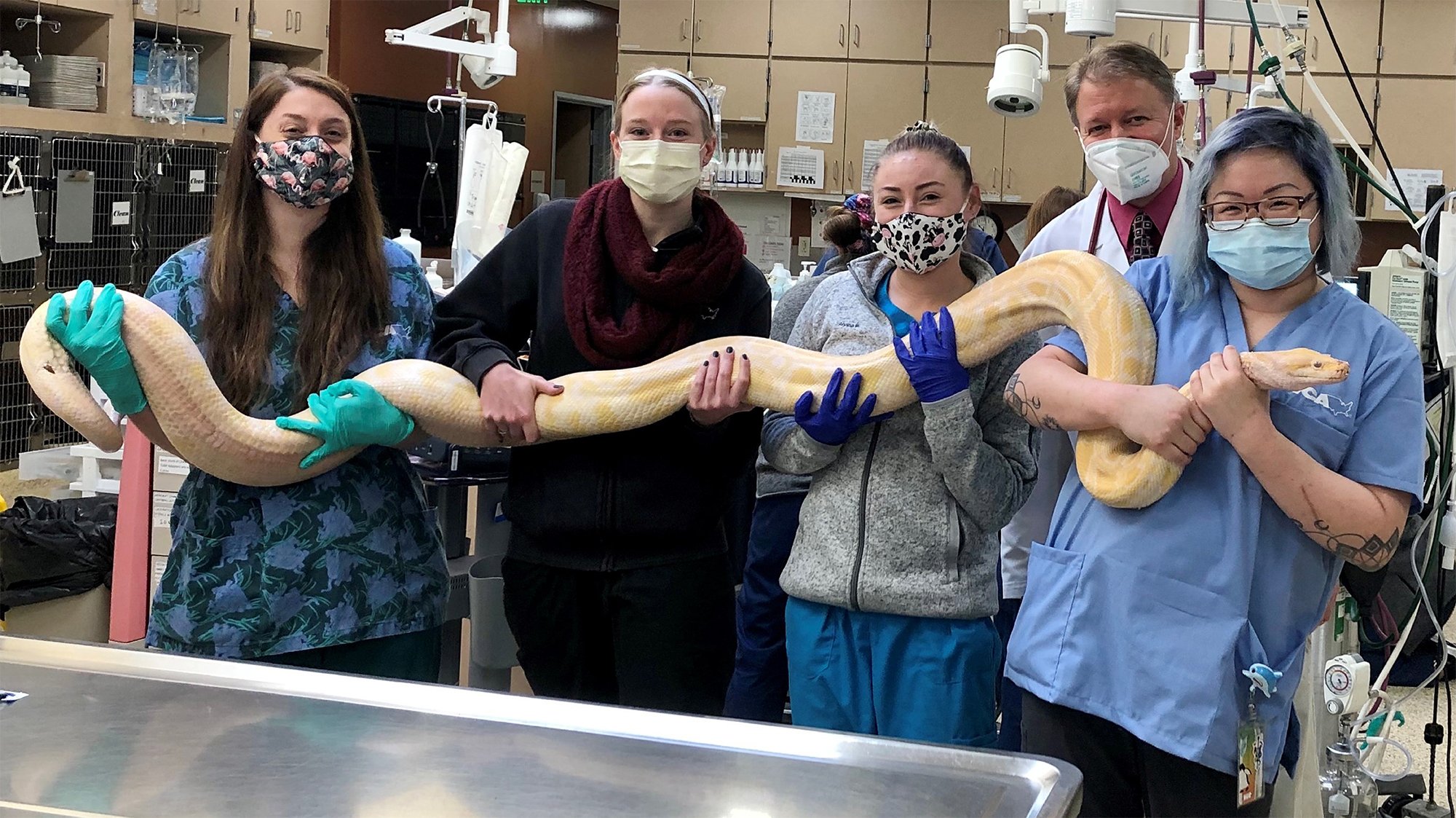Preserve owner Jim Stein first approached Dr. Leal to serve as the preserve’s veterinarian when it opened in the late 1990s. “I’ve now worked with the Lakota Wolf Preserve’s animals for 20 years,” states Dr. Leal. “Currently, the preserve serves as home to mostly wolves, but also foxes, a bobcat and a lynx.”
Jim, and his wife and wolf-care-partner Becky Mace, run the preserve and interact with the wolves every day, so they let Dr. Leal know if they have a concern about any of the animals.
“The wolves are a challenge to treat, it’s not like treating a dog,” notes Dr. Leal. “To care for the wolves, sometimes we mix medicines and sedatives with their food, or we have to sedate the wolves using a dart gun because the wolves are very wary of being caught.”
Once sedated, they bring the wolves into the VCA clinic for blood work, vaccines, x-rays or ultrasounds—the staff does as much as it can while the wolves are sedated.
Because of this care, the wolves live longer in captivity. “The wolves receive great care at the preserve, while wolves in the wild don’t have veterinary care,” says Dr. Leal. “We spay and neuter the wolves at Lakota like we would do with any other dogs. They have a lifespan of approximately 15 years.”
How it all began
When Jim was a little kid, he wanted to move to Africa and save the cheetahs! Then real life took over and he worked as a mechanic at General Motors for 16 years. “Then I met someone who owned a wolf preserve in Colorado who was looking for someone to take in the wolves,” explains Jim. “So, I quit my job, found land in New Jersey to rent for the wolves to live, and I sold my house so I could purchase fencing for the property.”
When Jim was building the preserve’s facility, his now-wife Becky who lived nearby volunteered to help him put up fencing—joining this lifetime adventure! “We have one daughter, Emily who’s now 28 years old, who we kid was raised by wolves,” shares Jim. “When she comes to visit, the wolves all come to the fence and jump up because she’s like a sibling to them.”
When the land was ready with fencing in 1998, Jim brought the 18 wolves that were previously living in Colorado to the land in New Jersey. They did their best to create a natural environment for the adult wolves in the forested land. They chose the name Lakota because it means friend, or alliance of friends. The preserve isn’t associated with the Lakota Native American tribe, also known as the Teton Sioux.
“We’ve cared for 51 wolves since we opened,” explains Jim. “We’ve had as many as 27 at one time, but today we have 15 wolves living here. The numbers fluctuate as they pass and new pups arrive.”
Living their lives with wolves
Lakota serves as home to grey wolves: timber, tundra, artic and British Columbian. Becky also takes care of four foxes living there, one bobcat and one lynx that arrived together and are best friends—growing up together as young animals.
The wolves eat an all-natural diet. Jim and Becky pick up road kill along the highways in the area. They also feed them chicken, hunters donate meat to the preserve, and at times they receive meat donations from the USDA.
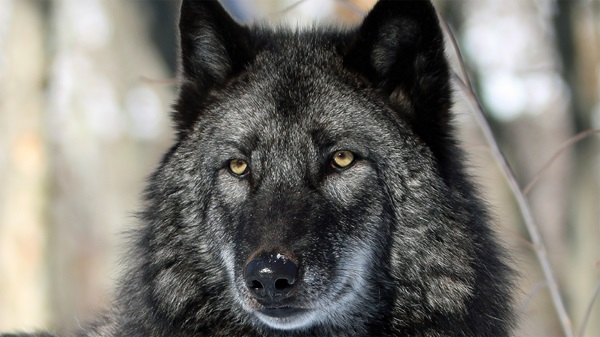
Becky and Jim are accepted as part of the packs as most wolves arrive as babies, and they’re only accepted when they’re young. “When a new wolf pup arrives, we first quarantine the pup at our house for two months in a separate enclosure that meets the federal government’s requirements,” explains Jim. “There, we monitor its health, have the pup checked by Dr. Leal and it receives vaccinations. After two months at the house enclosure, we move the pup to the preserve.”
Jim and Becky assess a new pup’s disposition and choose one of the four wolf packs they feel will accept the young pup. “I will then build an enclosure inside one of the enclosures that’s separate for protection,” explains Jim. “The wolves get very excited about the new member! Sniffing around the fenced enclosure that holds the pup alone and safe, which helps the pack get used to the new member. If all is OK, I’ll put the pup on a leash and do a walk through the larger enclosure. If I feel like it’s still OK, I’ll release the pup to live with the chosen pack.”
Ongoing care with VCA
Because the wolves live in packs with alpha males and beta females, naturally there’s fighting to determine position and ranking. With daily contact, Becky and Jim know if something’s wrong with one of the wolves and when the time’s right to contact Dr. Leal, who Jim considers a great surgeon.
As the alpha gets older, the younger wolves challenge the male. One fight for dominance resulted in a wolf’s crushed trachea, which is the worst medical situation they’ve encountered so far. They turned to Dr. Leal to perform surgery to save the wolf. “Two young wolves were fighting and one tore out the trachea of the alpha wolf,” explains Dr. Leal. “I performed emergency surgery and the wolf lived another 2-1/2 years after the surgery.”
In the wild, overtaken wolves are driven out of the territory. In the preserve, sometimes Jim and Becky have to build a new enclosure for a wolf that was driven out and find it a new companion.
Jim says they also monitor the eating patterns for each wolf in their care. “If wolves won’t eat on the second day, we know something’s wrong,” states Jim. “They try to hide when something’s wrong; it’s a survival thing. They hide their feelings for their own protection.”
“The owners first share photos with us at the clinic if there’s a concern,” says Dr. Leal, “and we talk about treatment options, working on prevention first. I love working with the wolves, foxes and bobcats—they’re all beautiful creatures. But I did discover that bobcats are the one species that I’m allergic to. I get itchy eyes and sneeze!”
A lifetime commitment to the wolves
Jim says the hardest part of running the preserve is the weather. “During rain and snowstorms, we have to sleep in our cars to watch for trees falling down and damaging the 9-foot fencing around each enclosure. Hurricane Sandy was the worst storm so far when nine trees fell. The wolves were nervous, too. They ran and paced with us as we were checking the fencing—following along. It’s a very stressful time for all of us.”
Becky and Jim plan to keep working for ten more years and then retire. “We work seven days a week,” concludes Jim. “We’ve dedicated our lives to these guys.”
To learn more about Lakota Wolf Preserve and support the animals that inhabit the natural land, click here. You may also join guided educational and photography tours, and follow Lakota on Facebook and Instagram.
Photos courtesy of photographer Jim Stein.
“Becky and Jim plan to keep working for ten more years and then retire. “We work seven days a week,” concludes Jim. “We’ve dedicated our lives to these guys.””


